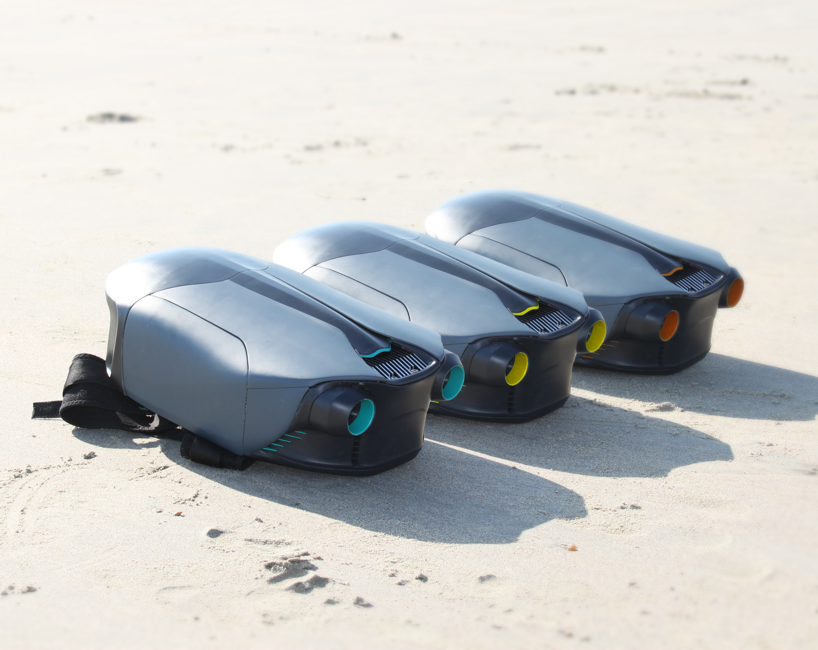Student Creates CUDA, the 3D Printed Underwater Jet Pack
About 71% of the Earth’s surface is covered with water and while technology for traveling on dry land has developed that allows people of moderate income to cover a fair amount of ground relatively quickly, underwater exploration of a comparable sort has remained out of reach for all but a few. In terms of individual exploration, the ‘luxury seatoy’ SEABOB underwater scooter has infiltrated the dreams of those interested in underwater transport — but with a price tag of about $17,000 it will remain a dream for most. In response to the inaccessibility of this kind of technology, one young man decided he was going to work to create a more price-friendly alternative.
This innovative young man, Archie O’Brien, worked with 3D Hubs to create his underwater enhanced transportation device, which he has named the CUDA. O’Brien’s creation won him first place in the recently announced 2018 3D Hubs Student Grant program in the Product Design category.
The CUDA is a jet propulsion-driven backpack which the user wears allowing a hands-free jet pack experience underwater. The initial idea was to miniaturize a jet ski and utilize that, but it didn’t quite fit in the backpack configuration. After a careful reading of “Numerical Analysis of a Waterjet Propulsion System” by Norbert Willem Herman Bulten, O’Brien was convinced that despite the difficulties involved, he could come up with something that would be better suited to the backpack configuration.
With dreams of gliding effortlessly through the clear waters off of Iceland or as a member of a pod of dolphins, he set out to experiment and research and experiment again. In order to be able to quickly create and rapidly iterate while developing the jet pack, O’Brien utilized 3D printing and CNC technologies. This also allowed him to control for costs as it was part of his primary objective to create something that could be significantly more affordable than anything else on the market. As such, he used FDM technology and PLA, two of the most widely accessible and economically viable methods for fabricating. In addition, SLS was used to create the impeller, using carbon fiber infused powder which gave extreme stiffness needed for such parts.
The key test was determining how the 45 3D printed parts would hold up underwater. To prepare them to operate in such extreme conditions, all the 3D printed parts were first coated with a thin layer of epoxy resin that was then slow-dried, and silicone seals were added to all of the access doors in order to keep water from leaking in and shorting out the battery and other electronics.
But, of course, the proof of the pudding is in the eating, and so there was nothing else to do but throw the thing on and get in the water, which O’Brien has done with gusto, testing the CUDA out in both pools and open water. In addition, parts have been left in water for months to see if they can withstand prolonged exposure, and so far it has all been up to snuff. The CUDA itself requires only 10 minutes to assemble – though I’m assuming that’s for someone with experience if my history of IKEA assembly finish times are any indicator. Once assembly is complete, the backpack is designed to work intuitively, with its harness holding it at 90 degrees in relation to your shoulders and speed controlled by a handheld trigger.
The CUDA is currently patent pending with hopes for the first commercially available models to hit the market in 2019.
What do you think of this news? Let us know your thoughts; join the discussion of this and other 3D printing topics at 3DPrintBoard.com.
[Source/Images: 3D Hubs]Subscribe to Our Email Newsletter
Stay up-to-date on all the latest news from the 3D printing industry and receive information and offers from third party vendors.
Print Services
You May Also Like
Low-cost “Suzy” Polymer Powder 3D Printer is Faster and Cheaper than Past Models
Polish laser powder bed fusion (LPBF) firm Sinterit has released a follow-up to its predecessors, Lisa and Nils, called Suzy, a $19,490 printer equipped with a 30W fiber diode laser....
India’s $58M Space Fund Is a Boon for AM Innovation
India’s space industry is picking up serious momentum. With a projected $44 billion space economy by 2033, the country is aggressively expanding its capabilities, fostering private-sector participation, and reducing its...
Japanese Advanced Manufacturing Capabilities Grow in Europe with Sodick’s Purchase of Prima Additive
The global economy is currently undergoing a reshuffling in terms of what gets manufactured where. In large part, this trend is being driven by new geopolitical alliances and the need...
Bosch Invests €6M into Serial Auto Part 3D Printing
German industrial conglomerate Robert Bosch GmbH, the world’s largest supplier of automotive parts, has announced a new investment into Nuremberg, Germany additive manufacturing (AM) facility. The nearly €6 million in...






























